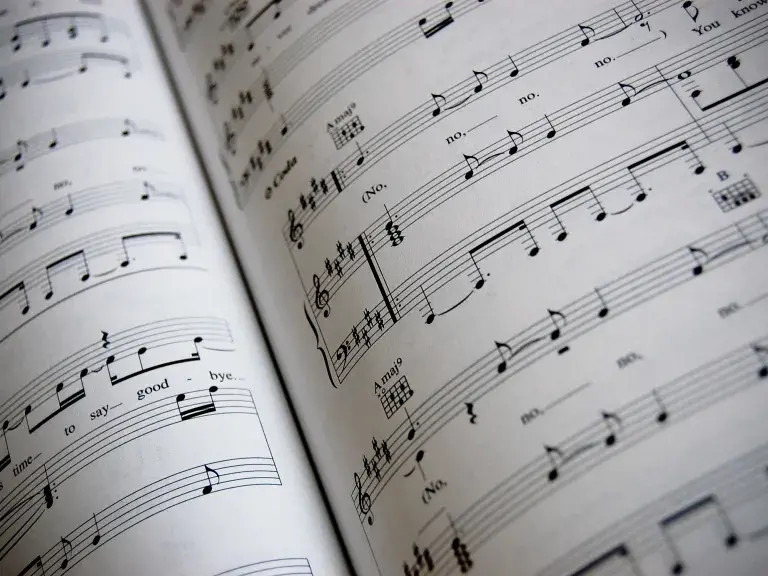
Get Organized
Use an organizational system that acknowledges the hierarchy of scale degrees and the relationships between them. Solfege is an effective system because it gives each pitch an identity that makes pitch selection in sight-singing less arbitrary.
The seven syllables commonly used for this practice in English-speaking countries are: Do, Re, Mi, Fa, Sol, La, and Ti. In other languages, Si is used for Ti--the seventh scale tone.
You can also use number scale degrees--Do is 1, Re is 2, and on up the scale. Note that while this system defines the individual identity of pitches, it conflicts with our need to use numbers for rhythm.
Learning Solfege
If you are unfamiliar with solfege and want to develop that skill, here are some things to try:
- Speak the syllables of the ascending and descending scale as a drill. Begin at a slow tempo so that you can be accurate. Then gradually speed up.
- Find simple musical material to practice. Initially, write the syllables in before singing. Eventually, you will be familiar enough with the system that you can read it at sight.
- When you practice, sing your vocalises on solfege syllables. This will help you learn and reinforce pitch relationships. Some particularly useful ones are:

Do-Sol-Do. This emphasizes the tonic/dominant relationship. Tonic is the first scale degree, or Do. The dominant is the fifth scale degree, or Sol.

Do-Mi-Sol-Mi-Do. The familiar tonic triad can help orient you in the key of your sight-singing excerpt.

Do-Re-Do-Ti-Do. This strengthens the "tendency tones," Re and Ti, which have a magnetic pull towards Do.
In the Audition
The conductor is asking you to sight-sing to gain information about your musicianship. You can demonstrate that, even before you begin to sight-sing, during your brief preparatory period. Don't be afraid to do some targeted prep work before singing the example. It will show the conductor that you have a thoughtful system of learning the music. And who doesn't want a singer like that in the choir! Here are some tips:
- Smile. Everyone benefits from this.
- Identify the key and time signature of the example. If you struggle to identify key signatures, here are the rules and a helpful chart (don't forget: an upper case letter denotes a major key, a lower case letter denotes a minor key).
- For a MAJOR flat key, the second to the last flat is the name of the key that you are in. The order of flats is B,E,A,D,G,C,F. For example, the key that has two flats (Bb and Eb) is Bb Major. The key that has 4 flats (Bb, Eb, Ab, Db) is Ab major.
- To find a MAJOR sharp key: go a half step up from the last sharp (furthest to the right). The order of sharps is F, C, G, D, A, E, B. For example, the key that has one sharp (F#) is G major. The key that has 6 sharps (F#, C#, G#, D#, A#, E#) is F# major.
 .
.
- Ask for Do (or scale degree 1) even if the passage begins on another scale degree. This will orient you strongly in the key of the exercise. Find your starting pitch in relationship to Do by singing up or down the scale.
- Scan the example for any tricky rhythmic figures. Work them out by keeping the beat and speaking them on ta, numbers, or any other useful system.
- Scan the example for any tricky intervals or melodic figures. Work them out by identifying the pitches using solfege and singing up or down the scale to find them accurately. Sing the printed tones more strongly and the filler scale tones more softly to emphasize the pitches you're attempting to find.
- Avoid humming your practice pitches. It's more beneficial to sing them softly on solfege. Don't sing the entire exercise under your breath beforehand. Only practice the things that need practice.
- Set up a tempo that is slower than slow and keep the beat throughout. At the correct tempo, you will be able to make accurate decisions in the moment and sing steadily without having to stop. This tempo will surely be slower than you expect. I assure you that a successfully sung audition at a slow tempo is preferable to a fast tempo with errors.
- Don't stop! If you lose your way, keep your beat going steadily and re-enter when you can. DO and SOL are useful reference points that will get you back on track. Continuing, rather than stopping, shows your ability to rebound in rehearsal. If the conductor would like you to sing the exercise again or fix errors, he or she will ask.
A Note on "Intuitive" Sight-singing
All experienced singers (even those who use an organized system like solfege) sight-sing with an integrated and intuitive approach. Some of us use familiar songs to remember certain intervals. Others may draw on instrumental experience. Still others may just "wing it". These approaches can be successful. But unless you have around a 90 percent accuracy rate, the lack of a system may fail you in the higher-stress audition setting. If you are strongly opposed to an organized approach to sight-singing, at the very least know what key you're in.
Happy Singing!
Resources
See Crash Course on Music Theory on this website.

